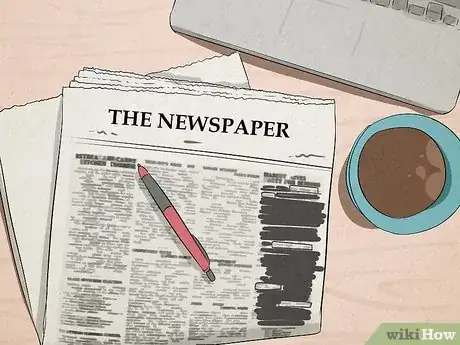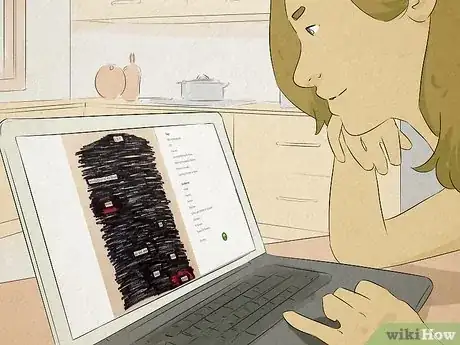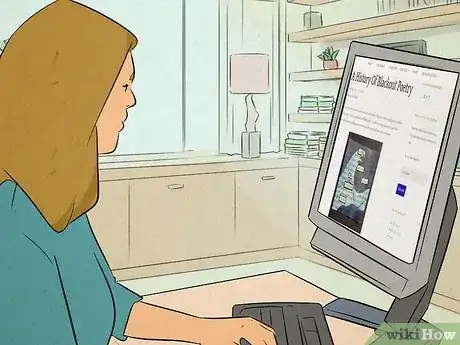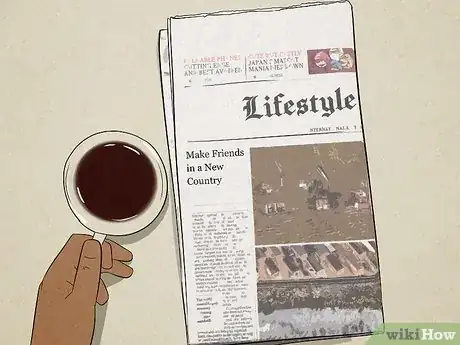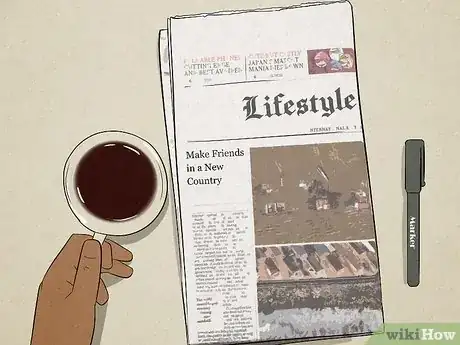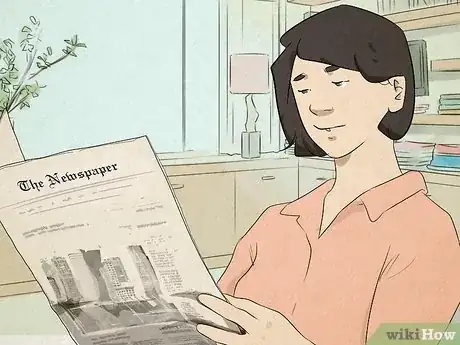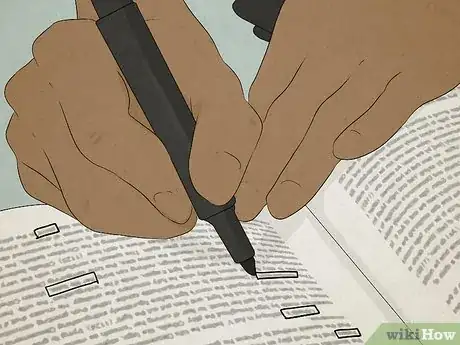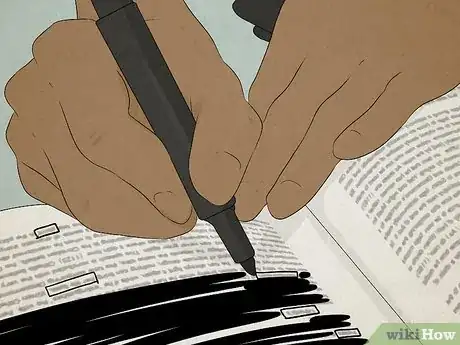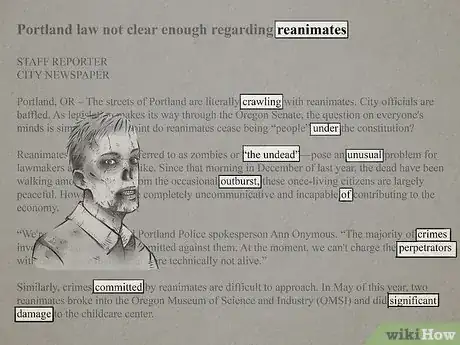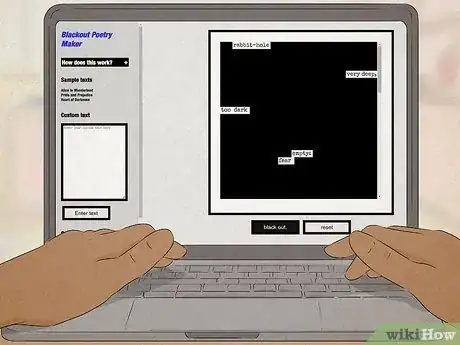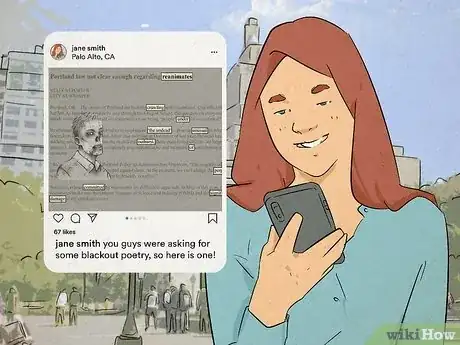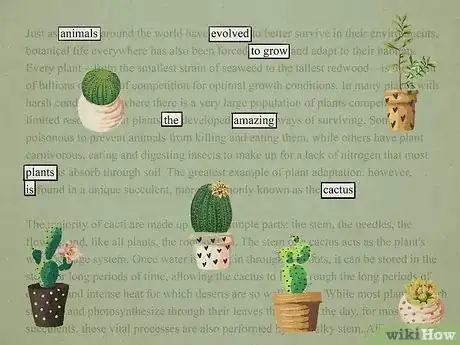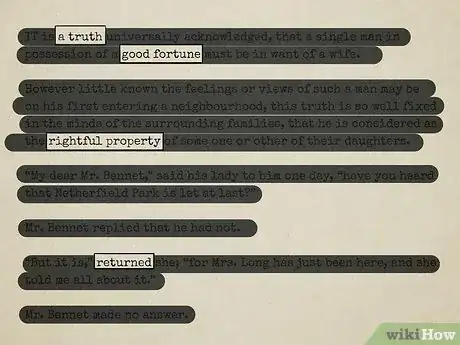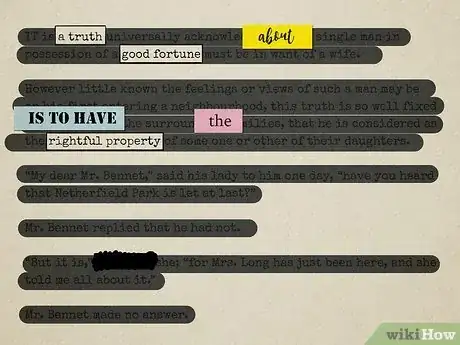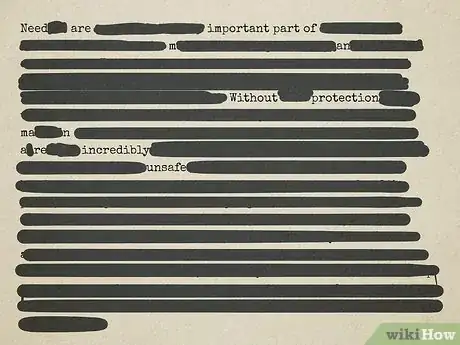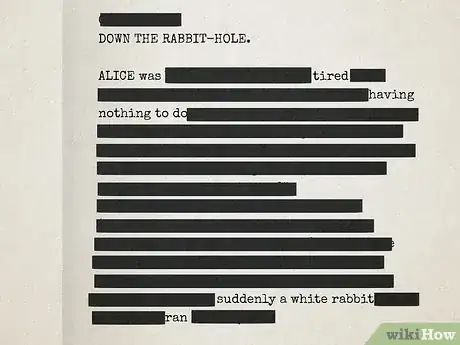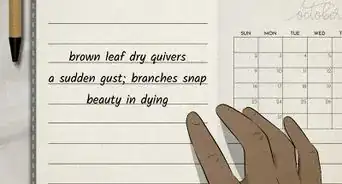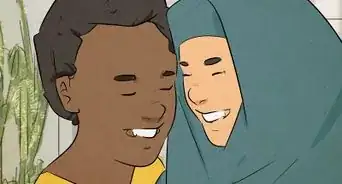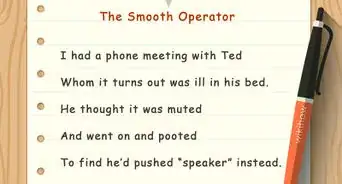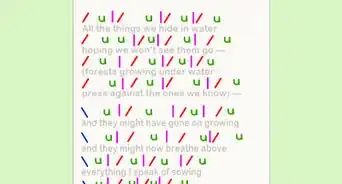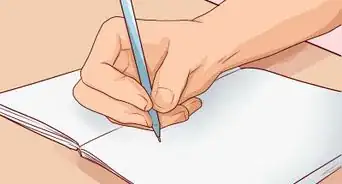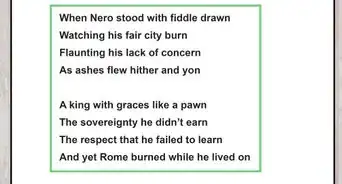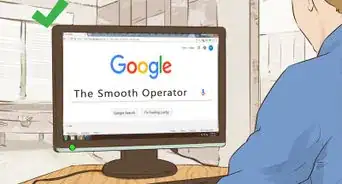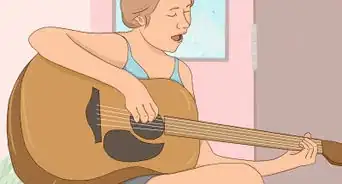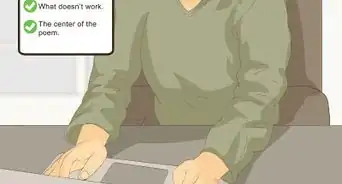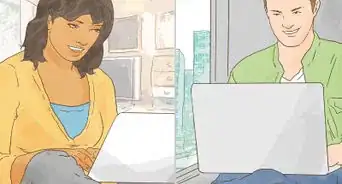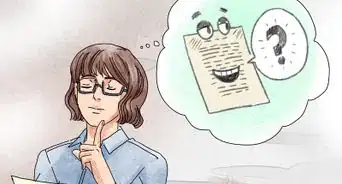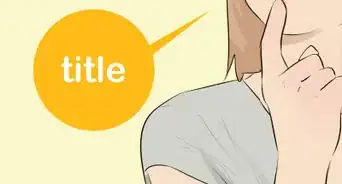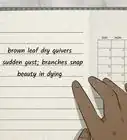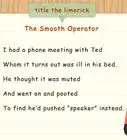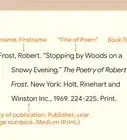This article was co-authored by wikiHow staff writer, Luke Smith, MFA. Luke Smith is a wikiHow Staff Writer. He's worked for literary agents, publishing houses, and with many authors, and his writing has been featured in a number of literary magazines. Now, Luke writes for the content team at wikiHow and hopes to help readers expand both their skillsets and the bounds of their curiosity. Luke earned his MFA from the University of Montana.
There are 11 references cited in this article, which can be found at the bottom of the page.
This article has been viewed 1,270 times.
Learn more...
Writing poetry can be a frustrating and confusing process, but it doesn’t have to be. That’s where blackout poetry comes in! A wise poet once said, “The world is full of texts… I do not wish to add any more.” His statement is more or less the idea behind blackout poetry, which is made by removing words from an existing text. Basically, the words left over (or, not blacked out) make up a brand new poem.[1] You can make blackout poetry any number of ways—with markers, scissors, glue, paint—and we’ll show you to get started making your own. Read on to learn how you can make your next masterpiece!
Things You Should Know
- Find a book, newspaper article, or other text that you feel comfortable drawing on or cutting up.
- Read through the text and use a Sharpie to draw a box around the words you want to keep.
- Use the marker to draw over all the words you didn’t box, leaving behind a new poem.
- Make blackout poems online with tools like the New York Times’ blackout poem maker, and share them on social media if you like.
Steps
What is blackout poetry?
-
1Blackout poetry is a poem made by removing words from an existing text. Normally, you write poetry by… writing! But in blackout poetry, the focus is on erasing or blacking out words to create a new poem out of words that are already written. Those words can be anything from a novel passage to a personal letter to a grocery list—as long as it’s got words, it’s fair game for blackout poetry.[2]
- The first notable contemporary blackout poet, Austin Kleon, used newspapers to make his blackout poems in 2010. He was bored and looking for inspiration, and started scribbling on articles in order to make new art.[3]
-
2Some of the first blackout poems were written by Ben Franklin’s neighbor. Though the form has gained popularity somewhat recently, it’s been around for quite a while. In the 1700s, Franklin’s neighbor, Caleb Whitefoord, constructed humorous poems by reading newspapers across the columns rather than down. He shared them with his friends, and these were some of the first recorded blackout poems.[4]Advertisement
-
3Blackout poetry has its roots in the art movement of Dadaism. Dadaism, which began during WWI, focuses on breaking an existing artwork to form something new. When you make blackout poetry, you’re participating in that spirit of Dadaism—taking a text and “breaking” it to make a new piece of art![5]
- A similar form, cut-up poetry, which “breaks” existing texts by literally cutting them up and rearranging them, gained popularity as a form when, in 1959, the beat poet Brion Gysin wrote a poem out of words he pulled out of a hat.[6]
Making Blackout Poetry
-
1Find a used book or newspaper to black out. Blackout poetry can be made with anything that has text printed on it: used books, newspapers, existing poetry, even a cereal box. If it’s got words, it can be made into poetry! Just be sure you don’t mind permanently drawing on or cutting up whatever it is you use—probably best to stay away from that brand new novel you haven’t read just yet.[7]
- Blackout poetry is great when writing poetry for beginners, since you’re working with words that already exist, and don’t have to worry about writing new ones.
-
2Find a black marker, plus optional supplies like paint, glue, and scissors. For the most common method of creating blackout poetry, you’ll just need a black marker (or any other color that will cover up text) and the original text itself. But you can also make blackout poetry by cutting out words with scissors, pasting in new words with glue, or even going full arts-and-crafts and adding things like ribbons or fabrics.[8]
- You can also just use a pen or a pencil rather than a black marker. A black marker will make removing words easier, but you can make blackout poetry with just about any writing tool. Mary Ruefle, a notable blackout poet, actually uses whiteout.[9]
-
3Read the source material before you black it out. Like most things in poetry, this is completely optional, but it can be helpful to read the text before you start altering it, so that you get an idea of what you’re working with. Take note of words and phrases that catch your eye and which you might want to use in your own poem.[10]
- Alternatively, it's equally valid to just dive right in and start blacking out before you’ve read the text. Follow your instinct, and don’t worry too much about doing it “right,” rather just do what feels right to you.
-
4Draw a box around the words you want to keep. These words can be right next to each other, or on opposite corners of the page. Usually, these words will form a sentence when read together, but they don’t have to. Box whatever you want to keep, and everything else will get blacked out.[11]
- Blackout poems sometimes interact with the text they’re blacking out. For example, if you’re blacking out an article about current events, the words you choose to keep might reflect your own thoughts on the events. This approach isn’t mandatory, of course.[12]
- Use a pencil to box possible words, if you don’t want your choices to be permanent just yet. Or, embrace the permanent marker and go with the flow!
-
5Draw over the words you didn’t box. You can completely black out the whole page except for your chosen words, or you can just run your marker along each line, as though you were highlighting the words. The key is to make the words you boxed the only legible words on the page, so that a reader only reads them.[13]
- Have fun with how you choose to black out the piece. Some poets black out the words by drawing illustrations, some leave the other words on the page and simply draw arrows or lines to connect the boxed words. It’s up to you.
-
6Experiment with your designs and margins. Your blackout poem doesn’t have to stop at the actual blacking out—this is poetry, after all, and you should get as creative as you want to. Consider drawing related illustrations in the margins of the page, or gluing in photos from magazines to create a collage that adds to the poem. Your collage poem is yours to create however you choose.[14]
-
7Make blackout poetry online. If you don’t want to scribble in or cut up a book or other text, there are some websites you can use to make blackout poetry digitally, without any permanent alterations. The New York Times has an online blackout poem maker where you can black out NYT articles, or use the Blackout Poetry Maker to black out any copy and pasted text.
- Alternatively, use a word processor’s highlight function to make a blackout poem. Set the highlight color to black (or your preference) and select and highlight any text you want to black out.
-
8Share your blackout poem online. Because blackout is so fun and accessible, it’s garnered plenty of attention on social media platforms like TikTok and Instagram. Consider taking a photo of or even performing your blackout poem on camera and sharing it with the world using hashtags like #blackoutpoetry or #erasurepoetry. Of course, the poem you write can just be yours to enjoy, too.[15]
Blackout Poem Examples
-
1Your poem can revolve around a specific, intriguing theme. You can do this for any sort of text: write a blackout poem about stars using an article from Nasa; write a blackout poem about nature using the Farmer’s Almanac. Or, choose your own theme and try to make an unrelated text talk about that theme instead.
- On first read, look for exciting and related words that can tie your theme together. For a poem on the sky, you might take note of "stars," "clouds," and "horizon," for example.
-
2Blackout poetry doesn’t have to make sense. Take a look at the example above. Like any form of poetry, you aren’t bound by grammar rules, and you don’t even need to form coherent sentences (here, you'll see an exciting, dynamic poem that isn't afraid to break the rules!). You might choose to keep only words that you like, but which don’t form any sort of “correct” sentence. Or, you might try to to make a sentence that purposefully doesn’t make any sense, just to play with the words.[16]
-
3Blackout poems might have other texts cut and pasted onto them. This poem above uses multiple mediums to create the perfect poem. So if you want a word that isn't there, go ahead and cut it out from another page. This'll give you even more freedom, and it can also make for a cool, mixed-media look.[17]
- Blackout poems sometimes incorporate methods used when writing shape poems, which arrange words into specific patterns. Try arranging your cut-out words into new shapes that relate to the poem (so if your poem is about a star, try a star shape!).
-
4Some blackout poems obscure parts of words to form new words. You aren’t limited to just blacking out entire words. Take a look at this poem above; the remaining letters create new, exciting messages from the original text. Sure, the new word might be scattered across the page, but that’s part of the fun. Your readers will love your creative take![18]
- If you find you’re looking for a particular word that isn’t in the text itself, this is a great technique for manipulating existing words to form the word you need.
-
5Your blackout poem can respond to the text you're working with. First, read the entire text, then decide how you feel about it. Do you disagree with author? Do you feel moved by their poem? Now, like this poem above, black out text to create a message that summarizes your reaction. This creates a fascinating, multi-dimensional blackout poem![19]
References
- ↑ https://www.thehistoryofblackoutpoetry.org/
- ↑ https://www.poetryfoundation.org/harriet-books/2017/09/-59a82b569440b
- ↑ https://www.thehistoryofblackoutpoetry.org/austin-kleon
- ↑ https://www.richlandlibrary.com/blog/2021-04-15/introduction-blackout-poetry
- ↑ https://longriverreview.com/blog/2022/a-history-of-blackout-poetry/
- ↑ https://www.thehistoryofblackoutpoetry.org/blacking-out-the-history-of-blackout-erasure
- ↑ https://www.richlandlibrary.com/blog/2021-04-15/introduction-blackout-poetry
- ↑ https://www.mysticmuseumofart.org/2020/06/blackout-poetry/
- ↑ https://www.thehistoryofblackoutpoetry.org/
- ↑ https://poemanalysis.com/genre/blackout-poetry/
- ↑ https://www.mysticmuseumofart.org/2020/06/blackout-poetry/
- ↑ https://www.thehistoryofblackoutpoetry.org/
- ↑ https://www.mysticmuseumofart.org/2020/06/blackout-poetry/
- ↑ https://www.mysticmuseumofart.org/2020/06/blackout-poetry/
- ↑ https://poemanalysis.com/genre/blackout-poetry/
- ↑ https://poemanalysis.com/genre/blackout-poetry/
- ↑ https://litreactor.com/columns/blackout-poetry-new-interest-in-an-old-artform
- ↑ https://poets.org/glossary/erasure
- ↑ https://www.thedickinson.net/blackout-poetry.html
